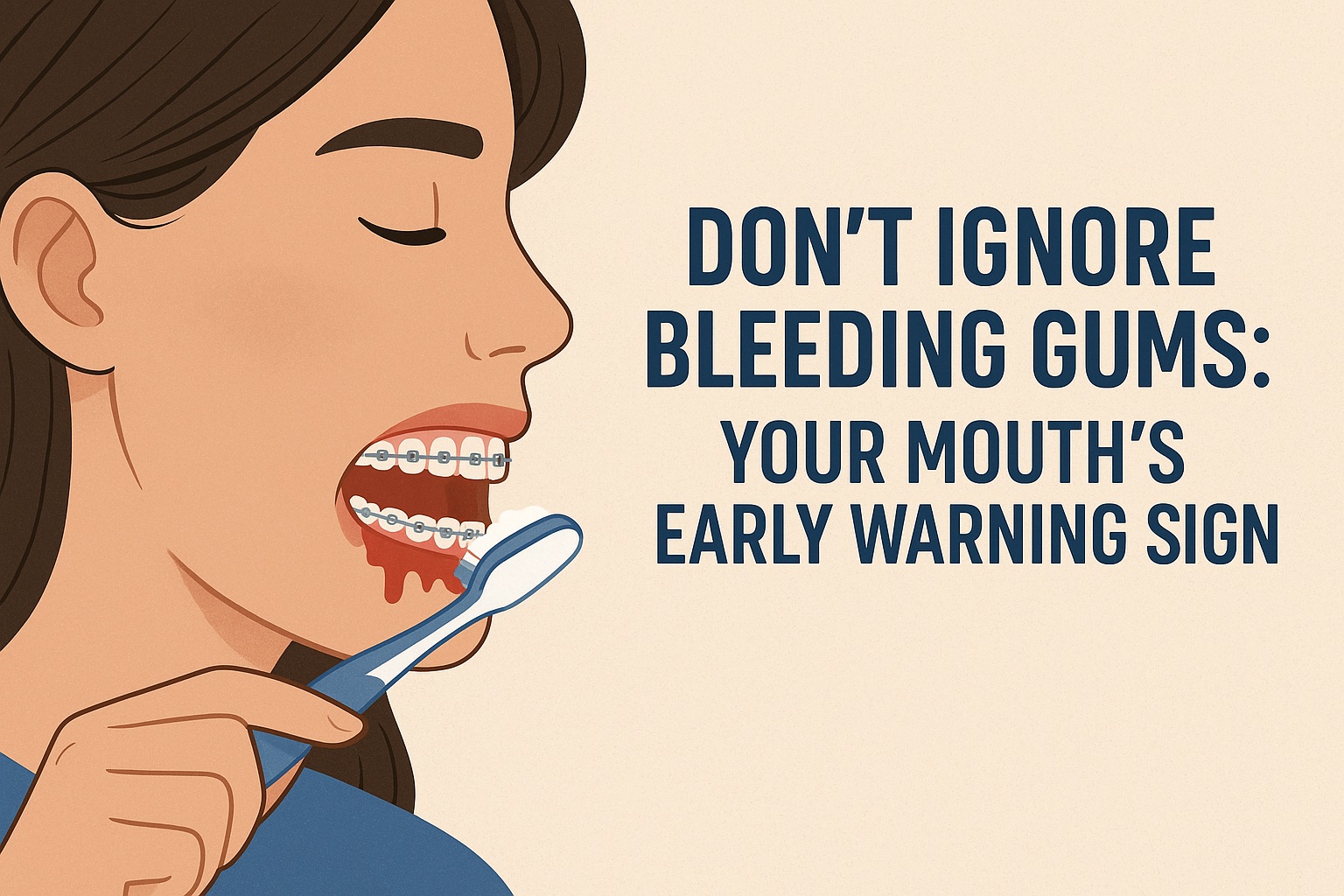Don’t Ignore Bleeding Gums: Your Mouth’s Early Warning Sign

Don’t Ignore Bleeding Gums: Your Mouth’s Early Warning Sign
When Sarah got her braces, she was determined to keep her teeth clean. She brushed diligently every day, carefully navigating around brackets and wires. But after a few weeks, she noticed
something worrying — her gums started to bleed whenever she brushed. They were tender, sometimes even painful.
Thinking the brushing was causing the bleeding, Sarah started brushing less often and avoided the areas that bled. It seemed logical — less brushing, less bleeding. But what Sarah didn’t realise was that this approach was actually making things worse.
Why Do Gums Bleed?
Bleeding while brushing your teeth might seem like a minor issue, especially with braces, but it’s not normal. Healthy gums should not bleed during brushing or flossing. When gums do bleed, it’s usually a sign of inflammation — known as gingivitis, the earliest stage of gum disease. This inflammation is your body’s response to plaque and bacteria building up along the gumline.
In Sarah’s case, avoiding brushing allowed more plaque to accumulate around her brackets and gums, making the inflammation worse. Brushing wasn’t the cause of the bleeding — plaque buildup was.
What Happens If Gingivitis Is Left Untreated?
If gingivitis is not addressed early, it doesn’t go away on its own. The infection can spread beneath the gums, attacking the bone that holds your teeth in place. This advanced stage of gum disease is called periodontitis, and unlike gingivitis, it often leads to permanent damage, including gum recession, bone loss, and eventually, loose or lost teeth.
Braces make it even more important to maintain excellent oral hygiene. The wires and brackets create extra surfaces where food and bacteria can hide, increasing the risk of gum problems.
What Should You Do If Your Gums Bleed?
The tricky part about gum disease is that it can progress silently, often without pain. That’s why early signs, like bleeding gums should never be ignored. Don’t stop brushing. Instead, brush more thoroughly and consistently, especially around the gumline. Use an orthodontic toothbrush or soft-bristled brush, and make flossing part of your daily routine (interdental brushes or water flossers can help with braces).
Professional cleanings and check-ups are essential to keep things under control. Your dentist or orthodontist can guide you on proper techniques and recommend products designed for braces.
Bottom Line
Bleeding gums aren’t something you should “wait out.” They’re a clear signal from your body that something’s not right. Like Sarah, many people mistakenly believe brushing is the problem, when
in fact, it’s the solution. If your gums bleed, don’t avoid brushing – double down on it with proper technique and seek professional care.
Early action can stop gum disease before it becomes serious, helping you protect both your teeth and your smile throughout your orthodontic journey.
